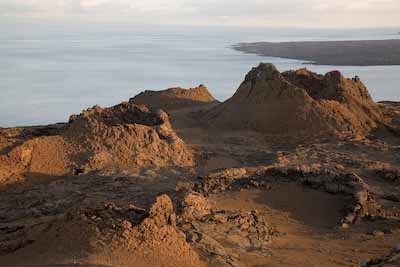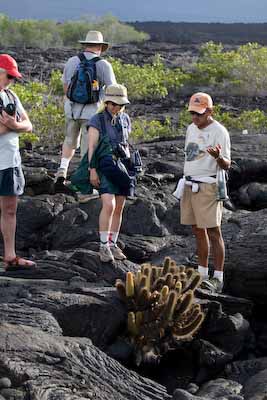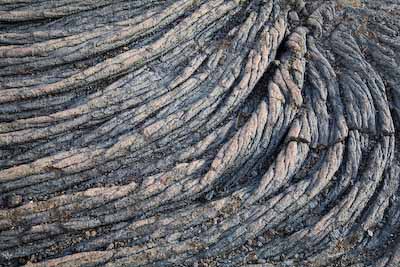Mar 18 2008
Geology of the Islands
I am no geologist, so this will obviously be a short post. But I thought a good place to start talking about the islands would be in their formation in the first place. BTW, my Aunt Wendy is sharing the blog with her students in Waterloo, NY (hi kids!), so I feel some responsibility to do some educational posts and also feel some pressure to get things right. My dad knows a lot more about this stuff than I ever will, so maybe he can make some informative comments.
The Galapagos Islands were formed by volcanic activity. If you want proof, look at this picture:

Spatter Cones on Bartolome Island
There is a “hot spot” below the seabed in the islands, which is essentially a place where magma escapes through the earth’s crust. As the tectonic plate that the seabed sits on moved above that fixed hot spot over a period of millions of years, the islands were formed. Because the tectonic plate is moving west to east, the oldest islands in the Galapagos are in the east (some of which have eroded to the point that they are completely covered by water again), and the youngest are in the west (Fernandina is the youngest, and is currently located right above the Galapagos hot spot, so its volcanoes are still active). Scientists believe the various islands are between 1 and 10 million years old. You can learn more about hot spots and plate tectonics by clicking here. Many islands and island chains around the world were formed this way, including Hawaii. The thing I find fascinating about this subject is that the theories of plate tectonics and hot spots were so recently formed. People didn’t know much about this stuff just 50 years ago.
Many of the hikes we did on the trip were on lava. One of the days (when we were on Fernandina Island), we walked on a massive lava flow – it was one of my favorite walks. Relatively soon after lava cools (very soon, in geologic terms), some plant species can grow in what seems like impenetrable black rock. Here are a couple pictures from that walk:


Scenes from our Lava Walk
Well, I don’t think I’ve said anything inaccurate about volcanic activity, so I’m going to quit while I’m ahead. Keep this topic in mind though, because it is one of the important factors in the discussion about evolution and why plants and animals are different in the Galapagos than they are in other places.
3 responses so far
Gneiss job!
Love Dad (and Mom)
Hi guys, here´s my blog: http://monocot.blogspot.com/
Happy travels!
Enuff with the geology lesson! we want to see wacky animals! show us the pictures!!!!!